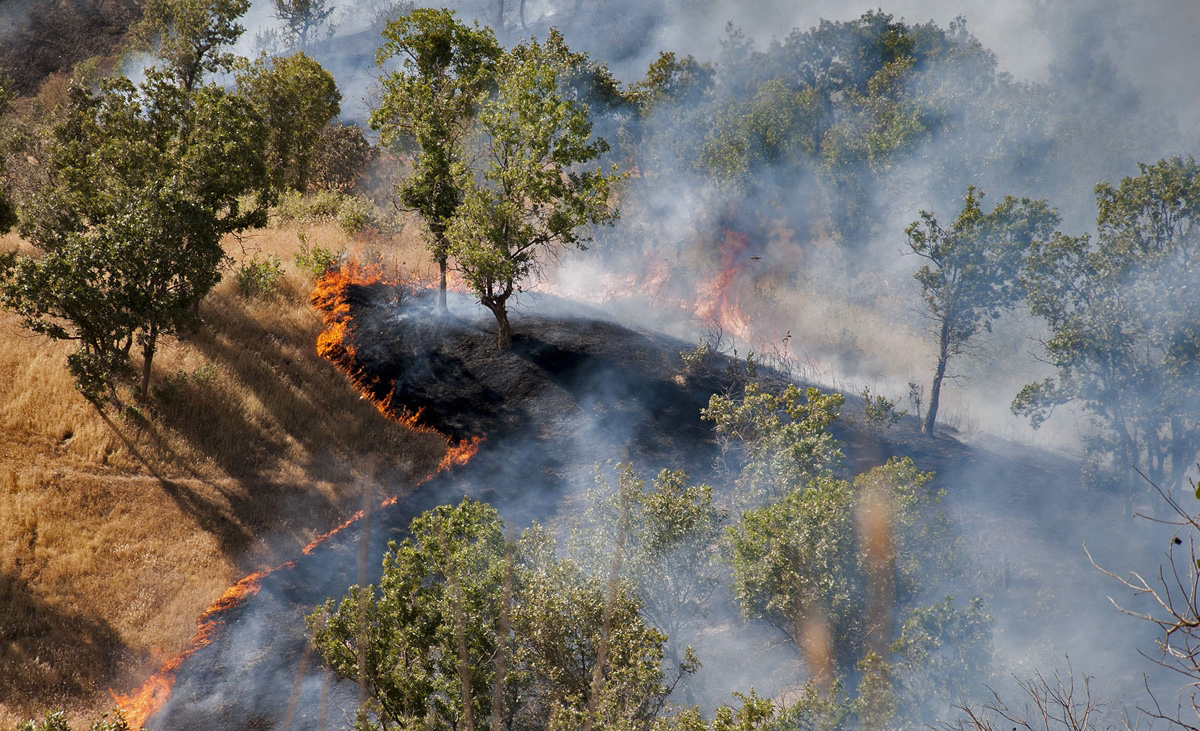The fires incinerating the woodlands of Canada’s Fort McMurray are reminiscent of the countless incidences of wildfire in Iran last year (ended March 19) that wiped out over 18,000 hectares of forestland — about 16.25% of the country’s forest area.
Last year, authorities had warned about frequent wildfires due to unabating drought and a scorching summer season. Within the first 5 months of the year (March- July 2015), about 7,000 hectares of forests across Iran were burnt in 823 cases of wildfires — 23% rise in the number of wildfires compared to the same period a year before, according to the Forests, Range and Watershed Management Organization.
This year, things may be worse: Iran is expected to experience a summer season about 1 to 1.5 degrees Celsius hotter than average, which could serve to increase the risk of wildfires.
Causes of Wildfires
While climate change has without doubt played a part in the increasing frequency and intensity of forest infernos, scientists say that is only half the story.
“Individuals don’t have much control over how climate change will affect wildfires in the future. However, we do have the ability to influence the other half of the equation, those variables that control our impact on the landscape,” says Michael Mann, assistant professor of geography at the George Washington University and lead author of a study published in April in the online journal PLOS One, which suggested that many models of wildfire predictions do not accurately account for human factors and are therefore misleading when identifying the main causes or drivers of wildfires.
In their study, Mann and his team said some of the factors linked to wildfires in California included where structures are built, and the frequency and location of ignitions from a variety of sources, ranging from cigarettes tossed out on the highway to electrical poles blown down
Most of the fires that ripped through Iran’s forests were caused by human error or negligence and exacerbated by a warming planet.
According to the FRWO, 95% of the wildfires last year were caused by human negligence. Building campfires in drought-hit forests or improperly extinguishing them are the usual causes of manmade wildfires. Deliberately setting forests on fire has also been reported. Shortage of water and unremitting drought — hallmarks of global warming in arid and semi arid regions — allowed the fires to spread across vast swathes of land last year.
What Is Being Done?
“Our approach is to entrust the people and local communities with protection of natural resources, especially forests. It is both efficient and economical,” FRWO chief Khodakaram Jalali was quoted as saying by ISNA last month.
One of the main reasons why wildfires destroyed large areas of woodlands was the lack of equipment at the disposal of local authorities.
FRWO officials say they have reached an agreement with the Armed Forces of Iran and the Disaster Management Organization to make use of their air fleet to extinguish forest fires before they spread.
However, according to Tabnak news website, aside from “publishing an educational infographic” and “promising to hold workshops on how to extinguish flames,” the FRWO has done little else.
Just over 6% of Iran is covered in forests, which may not seem much, but considering the country’s location in an arid and semi arid region of the planet, it is a blessing.The authorities must up their game to protect what little remains of Iran’s woodlands.


